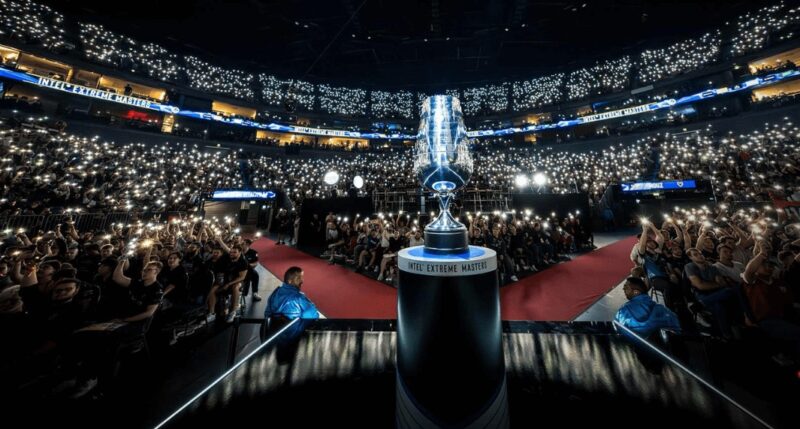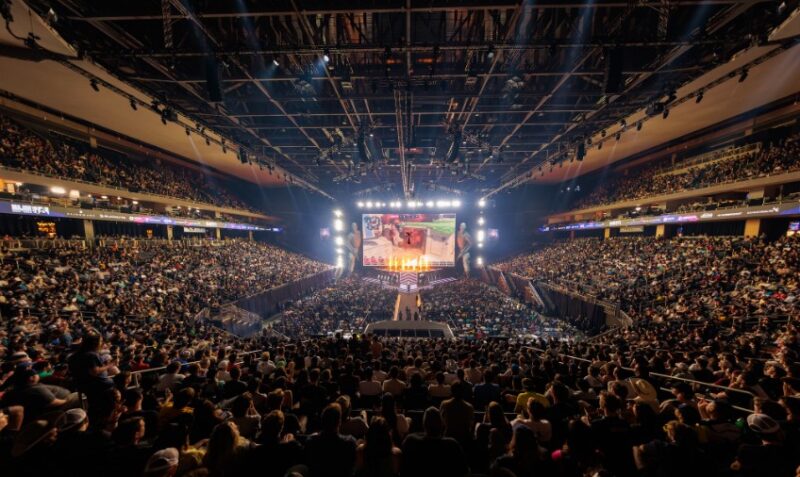Counter-Strike 2 heads into 2026 with a clear spine, two Valve-sponsored Majors that bookend each half of the year. Around those anchors sits a packed ecosystem of Tier 1 LANs, ranking deadlines, travel crunches, and roster decisions that often matter just as much as the showpiece events.
Anyone who wants to follow the season with real awareness, not just score-checking, can benefit from seeing how all those parts line up.
Tournament operators have published early calendars, and Valve’s rules continue nudging teams toward consistent results throughout the year.
That pressure forces the top twenty or so teams to live inside the so-called invite zone every month. The rhythm gets brutal. The margins get small. And the calendar rarely slows down.
What follows is a grounded guide to the season as it stands today. You get dates, formats, and the viewing angles that help the entire year make sense.
How the 2026 structure works
The easiest way to frame the season is to think in two Major seasons. Everything in the first half pushes toward the IEM Cologne Major in June.
Everything in the second half builds toward the late-year Major in late November. Many readers like to start with a clear overview, so I often suggest checking a reliable cs major calendar to see how the season is shaping up.
Season 1 endpoint
IEM Cologne Major 2026
Dates: June 2 to June 21
Location: Cologne, Germany
The full block stretches across three weeks, with the main arena days from June 18 to June 21.

Season 2 endpoint
Major #2 2026
Dates: November 25 to December 13
Location: To be announced
Organizer still to be announced as well.
In both halves, ranking-based invite rules and timing snapshots (the “VRS date” on event listings) shape nearly every decision teams make. You will see teams picking or skipping events just to keep their VRS relevance intact.
Confirmed major dates for 2026
Below is a table of the two confirmed Majors.
| Event | Dates (2026) | Location | Notes |
| IEM Cologne Major 2026 | Jun 2–21 | Cologne, Germany | Dates appear on BLAST and HLTV listings, with ESL highlighting the Jun 18–21 arena window |
| Major #2 2026 | Nov 25–Dec 13 | TBA | HLTV lists the dates, with organizer and city still unannounced |
The Majors are only part of the picture. The international calendar is filled with Tier 1 events that influence rankings and seeding. Watching those LANs gives you a reliable sense of form heading into each Major cycle.
Key Tier 1 anchors around the Majors
Below is a structured snapshot of the most important confirmed stops. They are listed with dates, cities, team numbers, and the basic format profile.
| Event | Dates (2026) | Location | Teams | Format snapshot |
| BLAST Premier Bounty Season 1 | Jan 12–25 | Malta (studio) | 32 | BLAST seasonal format, details on BLAST and HLTV |
| IEM Kraków 2026 | Jan 31–Feb 8 | Kraków, Poland | 16 (main) | Split blocks for Stage 1 and main event; ESL lists arena days |
| PGL Cluj-Napoca 2026 | Feb 9–22 | Cluj-Napoca, Romania | 16 | Swiss Bo3 into single-elim playoffs, Bo5 final |
| BLAST Premier Open Season 1 | Mar 16–29 | Rotterdam (playoffs) | 16 | Playoffs in Rotterdam, BLAST and HLTV list full dates |
| PGL Bucharest 2026 | Apr 3–13 | Bucharest, Romania | TBA | Featured on PGL’s official 2026 slate |
| FISSURE Playground 3 | Apr 20–26 | Shenzhen, China | 16 | Double-elim Bo3 groups feeding single-elim bracket |
| BLAST Premier Rivals Season 1 | Apr 27–May 3 | Fort Worth, Texas | 8 | Dates and location confirmed |
| PGL Astana 2026 | May 7–17 | Astana, Kazakhstan | 16 | Full match window published by PGL and HLTV |
| CS Asia Championships 2026 | May 19–24 | Shanghai, China | 16 | Dates and prize framing published |
| BLAST Premier Bounty Season 2 | Jul 20–Aug 2 | Malta (studio) | 32 | Full schedule published by BLAST |
| Esports World Cup CS2 | Aug 12–23 | Riyadh, Saudi Arabia | 32 | All stages on LAN; full operational details available |
| BLAST Premier Open Season 2 | Aug 24–Sep 6 | Europe (TBA) | 16 | Split structure with studio block plus arena week |
| BLAST Premier Rivals Season 2 | Nov 9–15 | TBA | 8 | Dates confirmed |
The pattern is clear. If you want to stay ranked for invites, you need to show up at a steady clip through all this.
How formats usually look in 2026

Tournament formats shape storylines more than many viewers realize. You get three recurring patterns across Tier 1 events.
Swiss groups into playoffs
This style is heavily used by PGL. PGL Cluj-Napoca 2026 is the textbook example.
Key traits:
- Bo3 Swiss groups
- Single-elim playoffs
- Bo5 grand final
What matters most in Swiss events:
- The middle rounds. The 0–1 and 1–1 matches often push favorites into awkward spots if they start slow.
- Map pool depth. Bo3 rounds reward teams with real prep, not teams relying on streaky pistol rounds.
- Decision pressure. The 2–2 elimination match tends to define entire seasons for borderline teams.
Double-elimination groups
You mostly see this around FISSURE and similar circuits. FISSURE Playground 3 uses double-elim Bo3 groups and then pushes winners deeper into the playoff bracket.
What stands out:
- Upper-bracket winners gain rest and more time to prep anti-strats.
- Lower-bracket runs build momentum, but fatigue can show quickly.
- The format gives teams room to correct one bad day.
BLAST seasonal circuits
BLAST’s Bounty, Open, and Rivals seasons operate on their own structure. The pacing tends to be tighter than long league formats.
What to keep in mind:
- Shorter match days intensify veto discipline.
- Mid-series calling has more impact because there are fewer long recovery gaps.
- Seasonal framing helps track narratives without jumping across disconnected LANs.
Season 1: January to late June

The road to the Cologne Major
Season 1 is packed from the first week of January to the final arena day in Cologne. Teams near the edges of the invite zone feel the pressure the most. Every map counts. Every travel block feels heavier than it should.
A realistic rhythm across the first half looks like the sequence below.
January
BLAST Bounty kicks things off in Malta from January 12 to 25, with IEM Kraków immediately after on January 31. Teams try to set tone here.
February
PGL Cluj-Napoca runs February 9 to 22. The Swiss stage usually reveals which lineups have real structure and which ones are still shaking off winter rust.
March
BLAST Open Season 1 carries a published March 16 to 29 window. ESL Pro League Season 23’s finals also sit somewhere in this part of the calendar on major indexes.
April
PGL Bucharest runs April 3 to 13. FISSURE Playground 3 follows directly, landing on April 20 to 26 in Shenzhen.
Late April and May
BLAST Rivals hits Fort Worth from April 27 to May 3.
PGL Astana moves into play from May 7 to 17.
CS Asia Championships in Shanghai fill in May 19 to 24.
Some teams enter all three. Some pick and choose.
June
Everything funnels into the IEM Cologne Major from June 2 to June 21.
What to watch at the Cologne Major
Cologne has a three-week footprint on the 2026 calendar. The middle stretch usually has the most drama. Those mid-stage days lock in playoff brackets and feature a ton of rewatchable matches.
Key viewing angles:
- CT structure is a huge separator under MR12. Teams with clean rotations and strong economy planning rarely crumble.
- Seeding storylines matter. You do not need to love ranking theory to see how seeding alters brackets.
- Early Swiss rounds tend to punish unprepared teams. A single off day forces tough rematches down the line.
Cologne also has symbolic weight. It often marks the moment where the year’s top four solidify.
Season 2: July to mid December

The road to Major #2
The second half of the year runs hotter. The schedule picks up more prize-heavy LANs, and operators openly discuss clashes. Even qualifiers create friction. You can see it in statements from ESL and PGL. Several events have been moved or adjusted because of overlaps.
Below is the broad spine of Season 2.
July
BLAST Bounty Season 2 opens July 20 to August 2.
August
Esports World Cup CS2 runs August 12 to 23. All stages are played on LAN in Riyadh. Even the open qualifier happens in person.
BLAST Open Season 2 starts almost immediately afterward, from August 24 to September 6.
September and October
ESL Pro League Season 24 is listed across September 21 to October 11.
November
BLAST Rivals Season 2 sits on November 9 to 15.
Then everything builds toward Major #2 from November 25 to December 13.
Why the Esports World Cup matters so much
EWC has released unusually clear operational notes for CS2 2026. Those notes include arrival days, media days, and venue logistics. Every stage is on LAN. That removes online volatility and forces teams to rely on tactical fundamentals.
The event also sits at a rough point in the calendar. It runs August 12 to 23. Any team attempting BLAST’s seasonal events, the EWC block, and ESL’s autumn cycle faces real travel pressure.
Practical outcomes:
- Tactical lineups tend to outperform high-variance lineups.
- Communication finally gets tested under consistent LAN stress.
- Preparation windows shrink for teams trying to attend every Tier 1 stop.
What actually matters most in 2026
You can track the whole season through a handful of practical storylines. They reward close attention and give you a cleaner sense of the field than raw match results.
1. Calendar collisions and roster decisions
Event overlaps force teams into tough choices. When teams show up underprepared, the play looks flat. The schedule has already pushed operators into removing or shifting events.
2. VRS snapshot timing
HLTV event pages list VRS dates and weights. Those dates act like performance checkpoints for invites. If a team peaks on the wrong side of a VRS snapshot, their seeding suffers.
3. Swiss pressure games
The 2–2 matches at Swiss events often define seasons. A single elimination map can change a team’s invite trajectory for the entire half.
4. Map pool churn
When maps rotate, some teams adapt fast. Track who maintains form across two or three LANs.
5. Back-to-back travel blocks
Astana to Shanghai in May is a known stress point. PGL framed them as a two-stop block with minimal turnaround time.
6. LAN-only environments
EWC strips out online volatility. Communication gaps show quickly.
7. BLAST seasonal arcs
BLAST’s Bounty, Open, and Rivals seasons create a continuous storyline across the year.
8. Format differences
Some teams thrive in double-elim groups because they adjust well. Others thrive in Swiss because they perform consistently day after day.
9. Prize pool gravity
High-value events attract nearly every top team. EWC’s two-million-dollar pool guarantees elite participation. PGL Astana also sits in the high-stakes category.
10. Major #2 unknowns
The second Major does not yet have a published city or organizer. Once revealed, the entire autumn narrative could shift.
A workable viewing plan
If you do not have the time (or energy) to watch every single match, you can still follow the season with solid context by focusing on the key pressure points.
- Watch the final two Swiss days at PGL events. That is where qualification is settled.
- Watch BLAST Open playoffs weekend. Rotterdam in Season 1 and the European block in Season 2 form natural story arcs.
- Watch EWC from quarterfinals onward. Add one group day earlier to check LAN performance.
- Watch both Majors from the first day of the main Swiss stage to the last playoff map.
Closing Thoughts
The 2026 season carries a dense schedule, sharper ranking rules, and a community that finally expects teams to hold form month after month. Watching it at a high level becomes much easier when you know where the pressure sits.
The calendar is published. The formats are familiar. The stakes are clear. If you track the right touchpoints, the entire year lines up cleanly and you get a season that feels coherent instead of chaotic.

